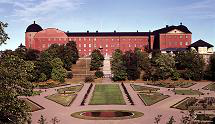Speaker
Prof.
Michael Holzscheiter
(University of New Mexico)
Description
Antiprotons have been proposed as potential modality for particle beam cancer therapy by Gray and Kalogeropoulos in 1985. This proposal was based on the enhancement of physical dose deposition near the end of range due to the annihilation of antiprotons when captured by a nucleus and the expectation of an enhanced RBE of this additional dose.
Starting in 2003 the AD-4 collaboration at CERN has studied biological effects of antiproton beams on V79 Chinese Hamster cells and human FaDu cells. The AD-4 collaboration has developed relative and absolute dosimetry for pulsed antiproton beams and shot-by-shot detection of beam intensity and profile during irradiation experiments. In 2006 data from these measurements were used to benchmark the FLUKA Monte Carlo code, which then has been used for calculations of physical dose inside and outside of the primary antiproton beam. To date we have collected 5 independent data sets on clonogenic survival of V-79 Chinese Hamster cells taken under (near) identical conditions.
In initial experiments using 50 MeV antiprotons we have determined biological effective dose ratios (BEDR) for peak to plateau of antiproton and proton beams of identical energies and beam conditions and found an enhancement in the antiproton case of a factor of 4.
Using a clinically relevant energy of 126 MeV we generated a 1 cm deep spread-out Bragg peak (SOBP) and measured survival vs. depth along the entire beam path. Together with the the absolute dose deposited at each depth point obtained by FLUKA calculations using beam profilometry and shot-by-shot dosimetry we are now in the position to extract relative biological efficiencies (RBE) vs. depth.
We will describe the current status of the experimental program, present preliminary data on RBE vs. depth, and speculate on future developments.
Primary author
Prof.
Michael Holzscheiter
(University of New Mexico)

